By Louise Irvine
Among the stars of the Elephant Safari exhibition at WMODA are the impressive Royal Doulton figures of Princess Badoura arriving at her wedding on an elephant. Edmund Dulac illustrated the exquisite spectacle of the marriage procession for Princess Badoura: A Tale of the Arabian Nights in 1913. The original sculpture was exhibited at the British Empire Exhibition at Wembley in 1924, an event aimed at promoting unification and encouraging imperial trade. Simla and Saucy, two of the elephants on display at Wembley, disgraced themselves by getting into a fight while bathing in the lake and eating the floral displays.
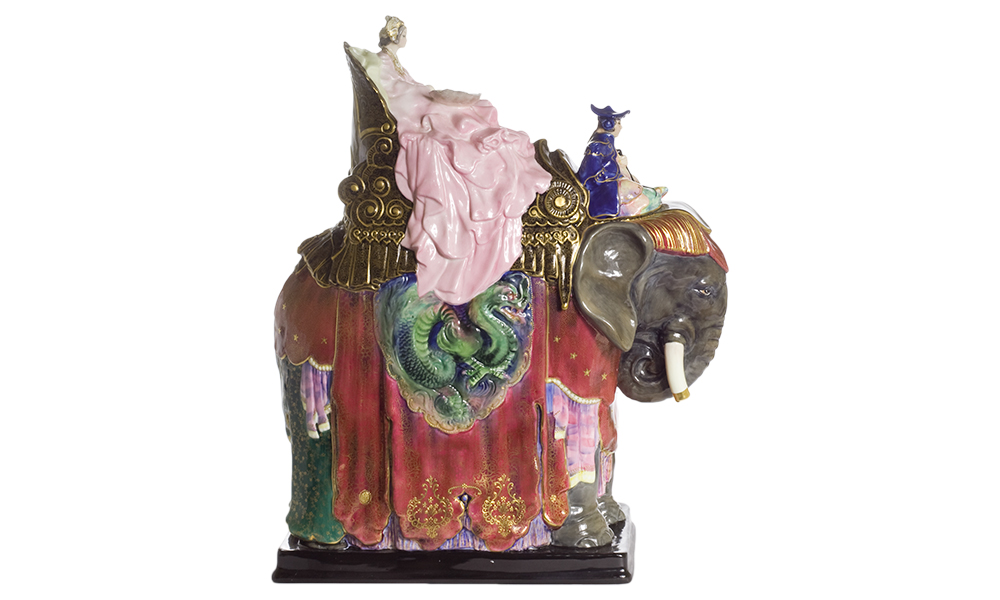
Royal Doulton Princess Badoura

Princess Badoura Original Model by H. Stanton
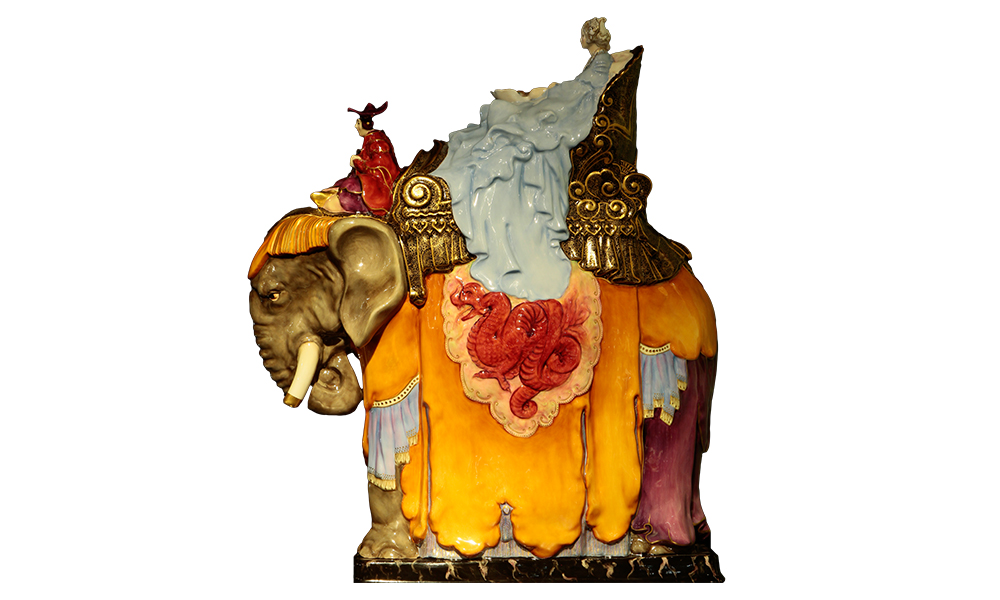
Royal Doulton Princess Badoura Exhibition Model
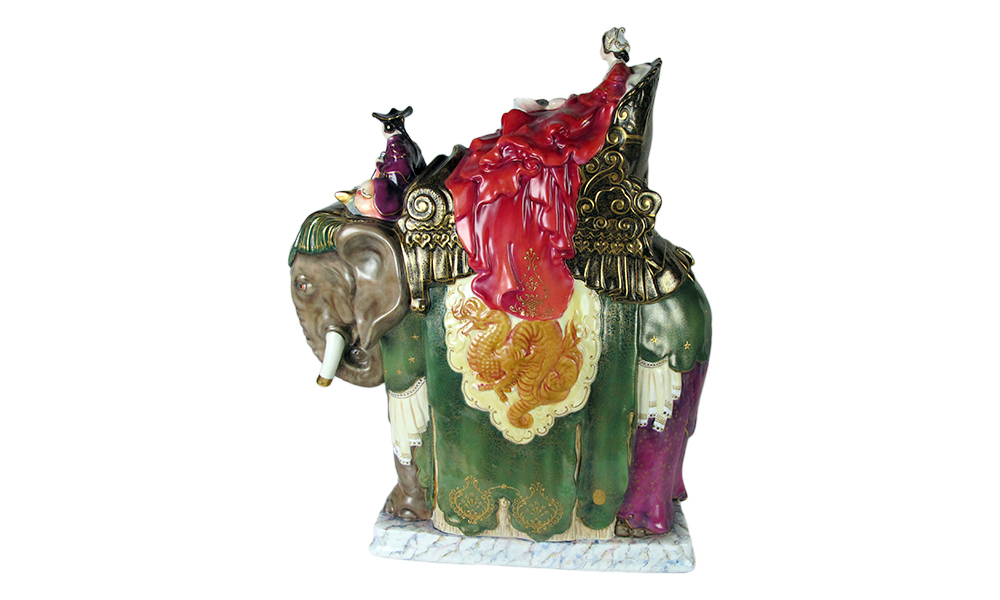
Royal Doulton Princess Badoura Color Trial
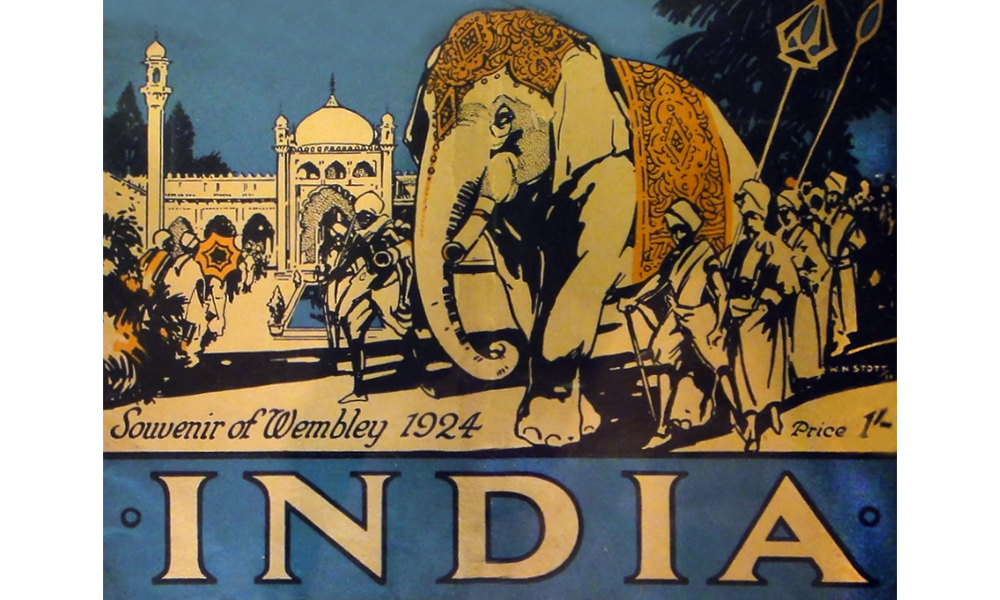
British Empire Exhibition Wembley 1924
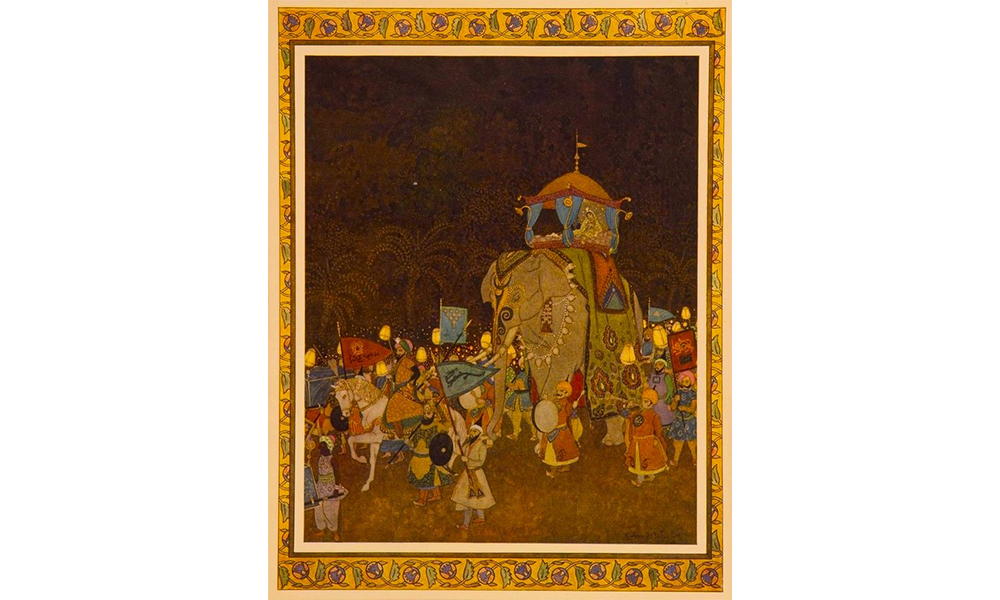
Princess Badoura by E. Dulac
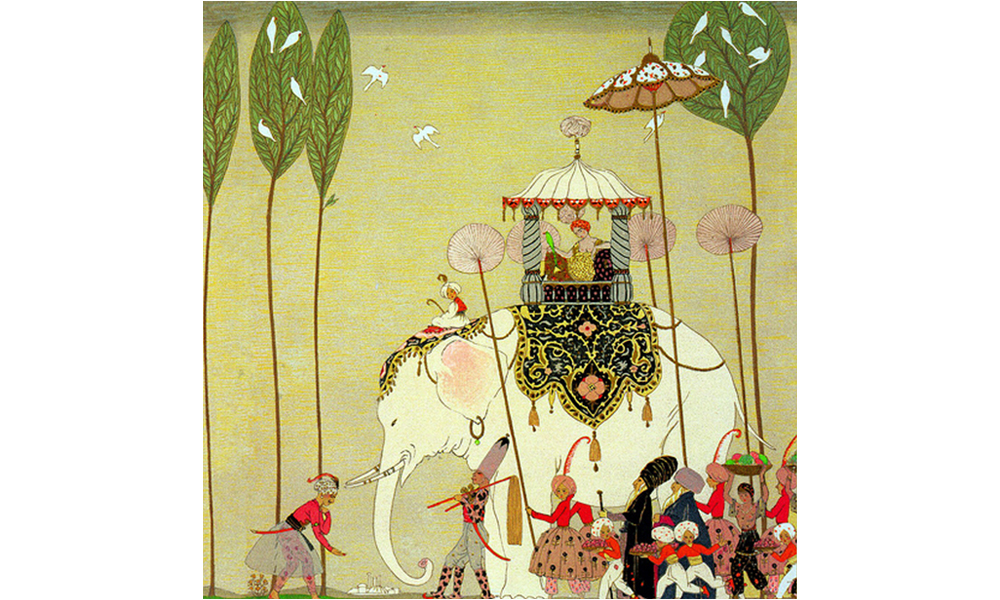
Princess Badoura by G. Barbier
Princess Badoura was modeled by Harry E. Stanton, master in charge of Burslem School of Art in the 1920s, assisted by E. Van Phillips. Harry Tittensor, one of Royal Doulton’s most versatile artists, also worked on the figure #706, which was recorded in Doulton’s model book in 1930. However, it was not until 1952 that Princess Badoura joined Royal Doulton’s Prestige collection, and for 50 years, it was made to order for wealthy clients. Only the most experienced ceramic artists were entrusted with decorating this imposing figure, which stands 20 inches high. It required over 160 hours of intricate painting and five kiln firings before gilders added the final embellishments of 22-karat gold. A new color scheme was devised for Harrods department store in London in 1996, and the exhibition models and unique color trials are showcased in the WMODA exhibition.
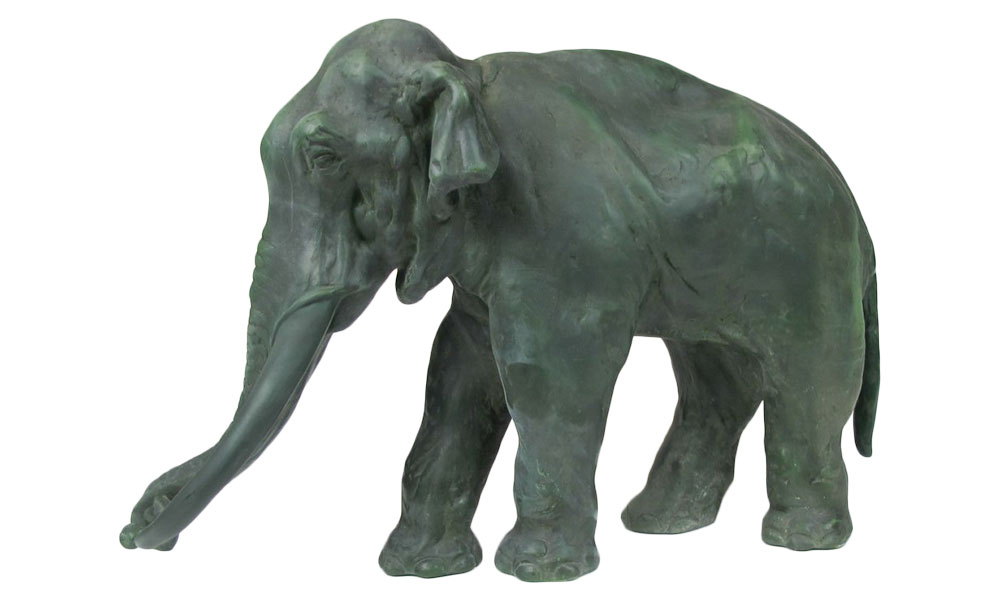
Royal Doulton Asian Elephant by R. Schorr
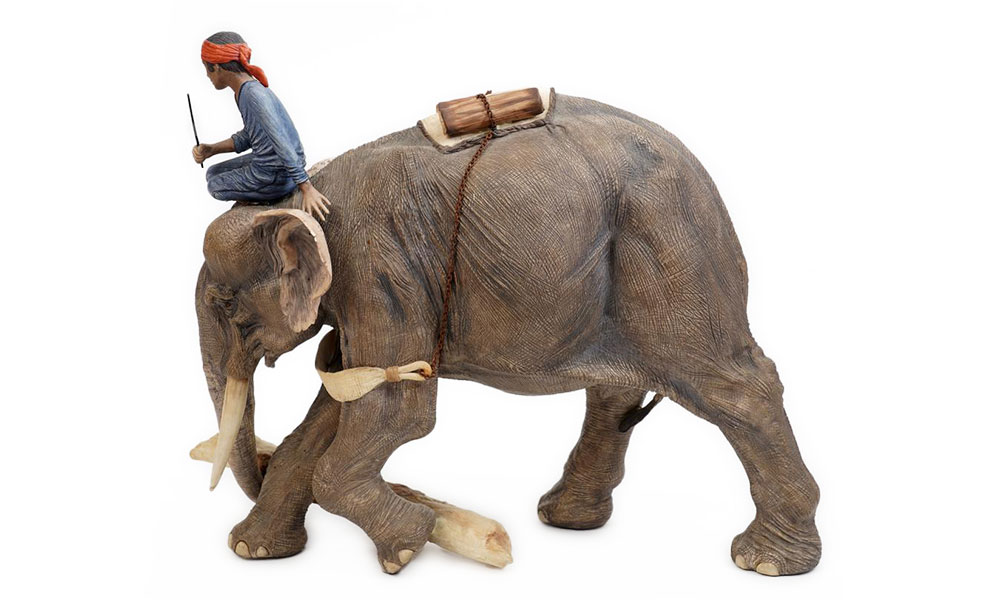
Boehm Asian Elephant
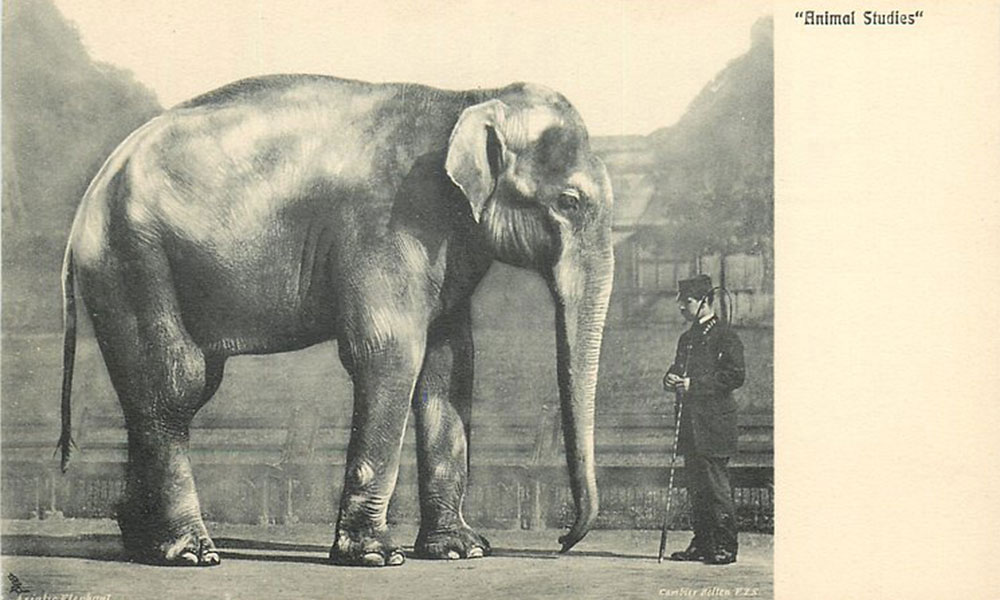
Asian Elephant Raphael Tuck Postcard
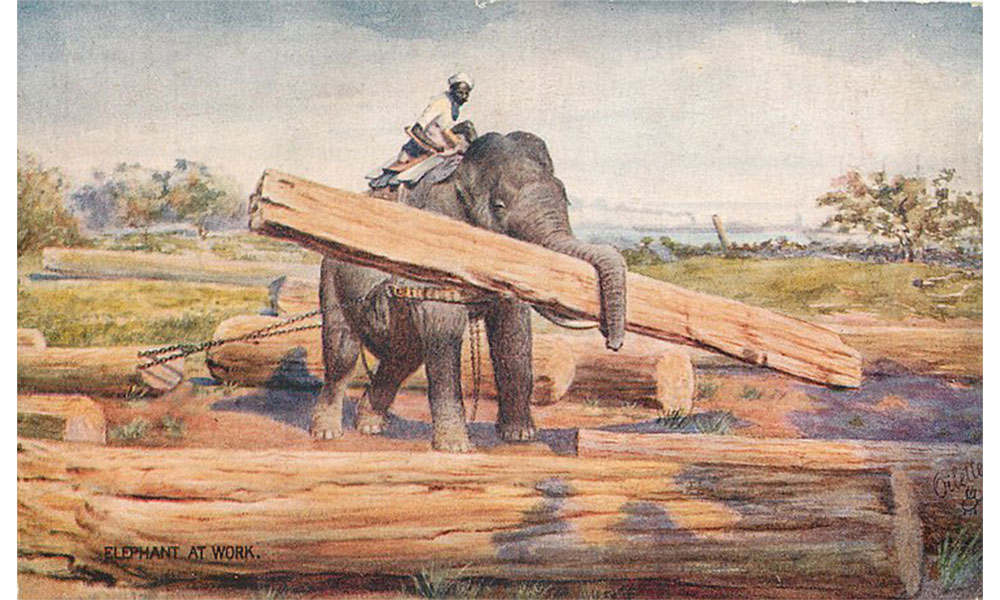
Elephant Working Raphael Tuck Postcard
Asian elephants have been domesticated for thousands of years, harnessing their massive strength for laborious tasks, transportation and even war. European contact with elephants dates back to the 4th century BC, when Alexander the Great enlisted them in his army in India, having been impressed with their effectiveness in battle. An elephant charging was a terrifying sight, as later demonstrated by Hannibal, the Carthaginian general when he crossed the Alps with 37 elephants to attack the Romans. Centuries later, the Roman invasion of Britain included military elephants brought by the emperor Claudius.
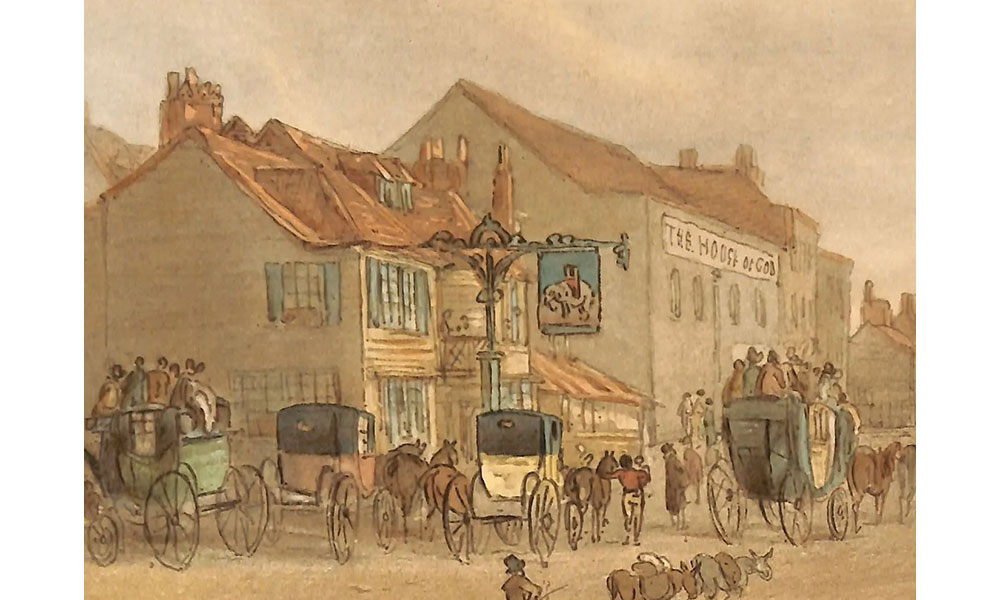
Elephant and Castle-Coaching Inn London Detail by T. Rowlandson
In Medieval times, illuminated manuscripts and bestiaries depicted war elephants carrying howdahs crammed with soldiers. The artists interpreted the massive seat on the elephant’s back as a stone castle. Martin Schongauer’s 15th-century print was the basis of later scientific illustration and inspired the decorative arts. The rook or tower in chess was often sculpted in the form of a war elephant symbolizing the battle strategy of the game. The “Elephant and Castle” image became a heraldic device representing strength, then a pub sign, and ultimately a district in South London named after a famous pub.
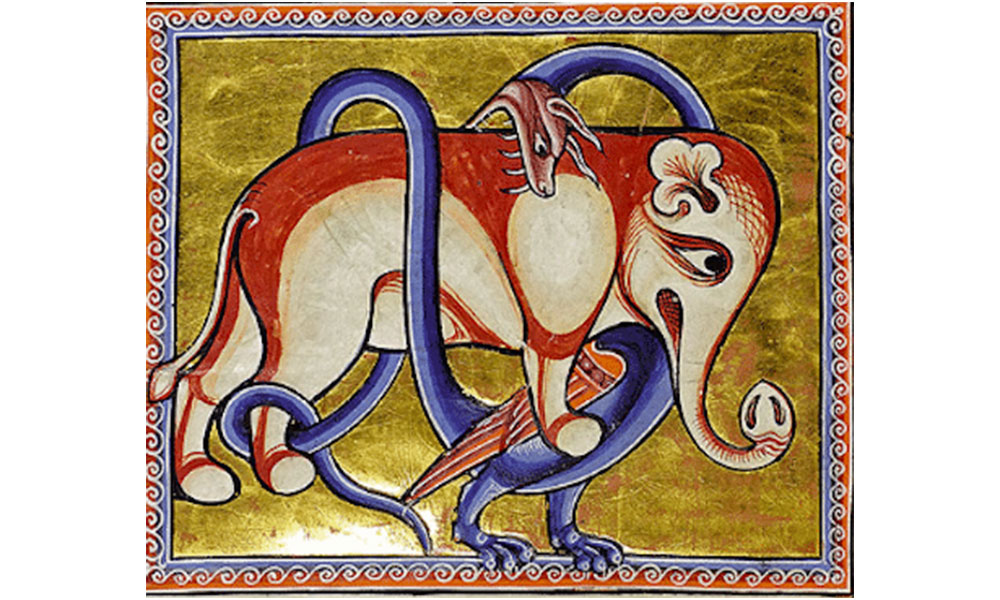
Elephant and Dragon Aberdeen Bestiary
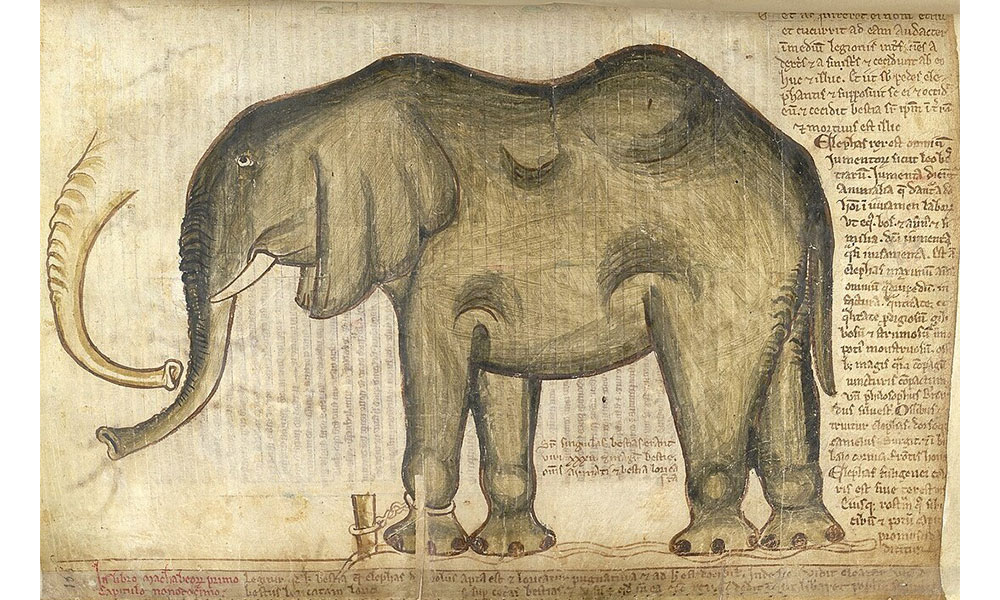
Tower of London Elephant by Matthew Paris
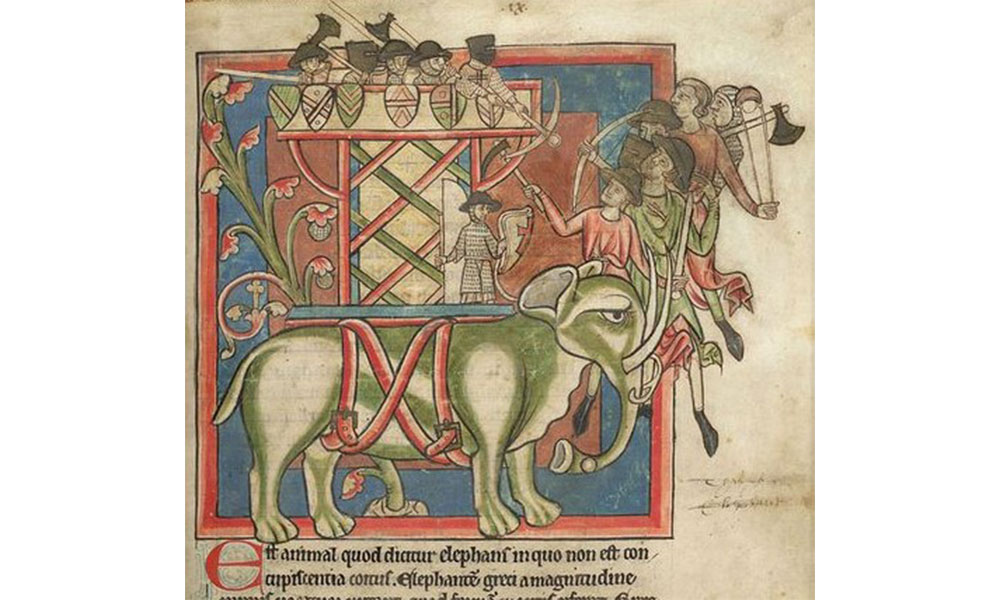
War Elephant Medieval Manuscript
For centuries, elephants have been presented to European rulers as diplomatic gifts and prestigious pets. Britain’s first elephant was a gift from King Louis IX of France to King Henry III, and it was housed at the Tower of London in 1255, where it attracted huge crowds of sightseers. Matthew Paris, a Benedictine monk and chronicler, produced two remarkably accurate life drawings of this African elephant. Apparently, the elephant was fed the finest prime beef and red wine, but it reportedly died two years later, no doubt from its unsuitable diet.
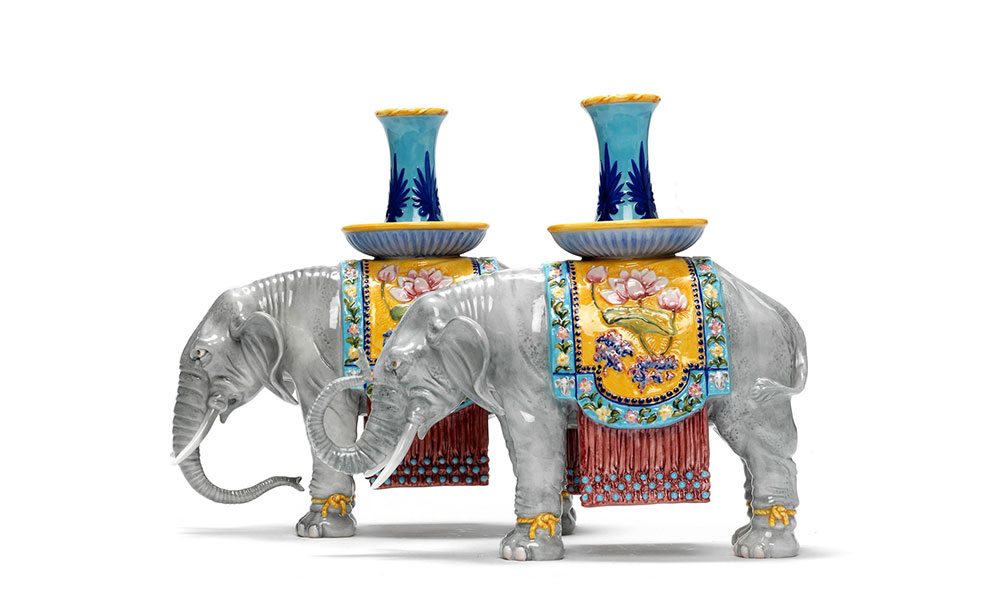
Royal Doulton Elephant Candlesticks
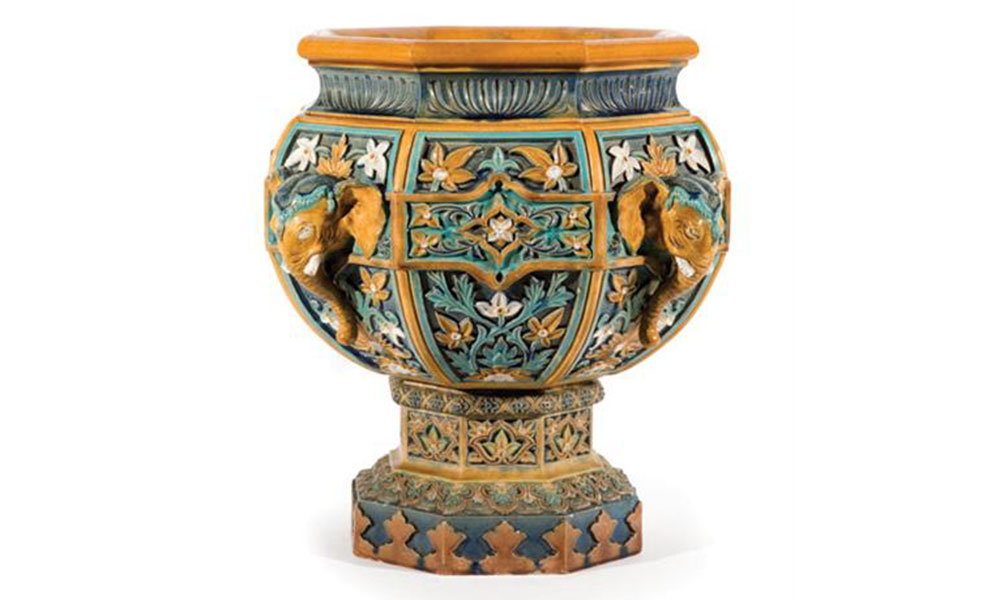
Doulton Victorian Jardiniere
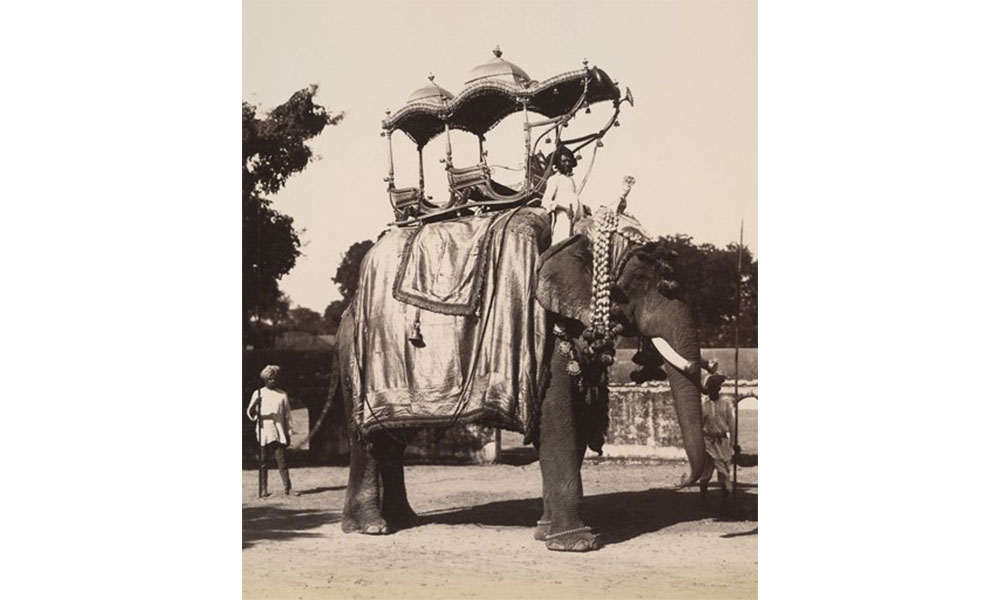
Elephant with a Golden Ambari in Baroda
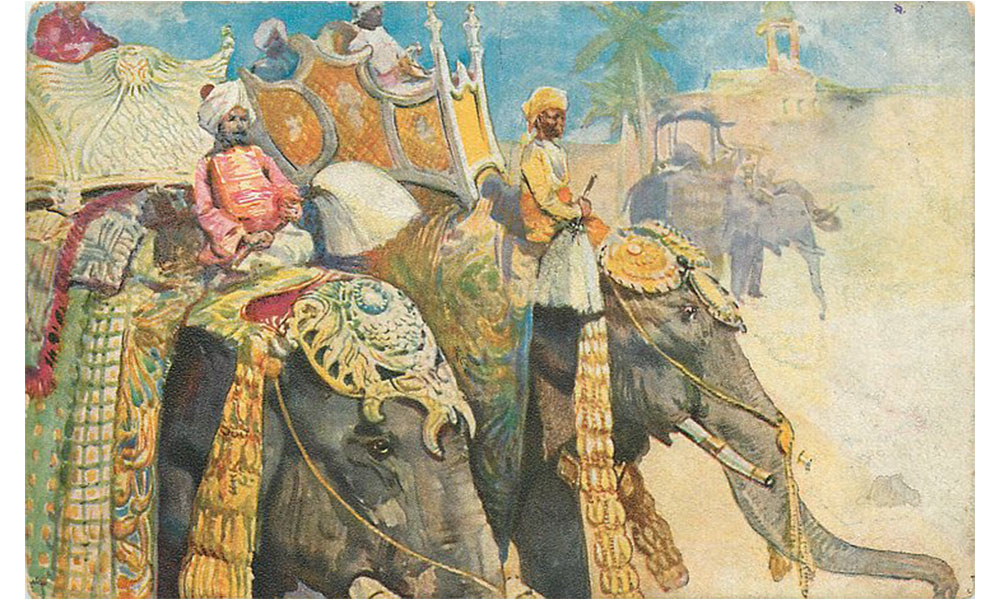
Gorgeous East Raphael Tuck Postcard
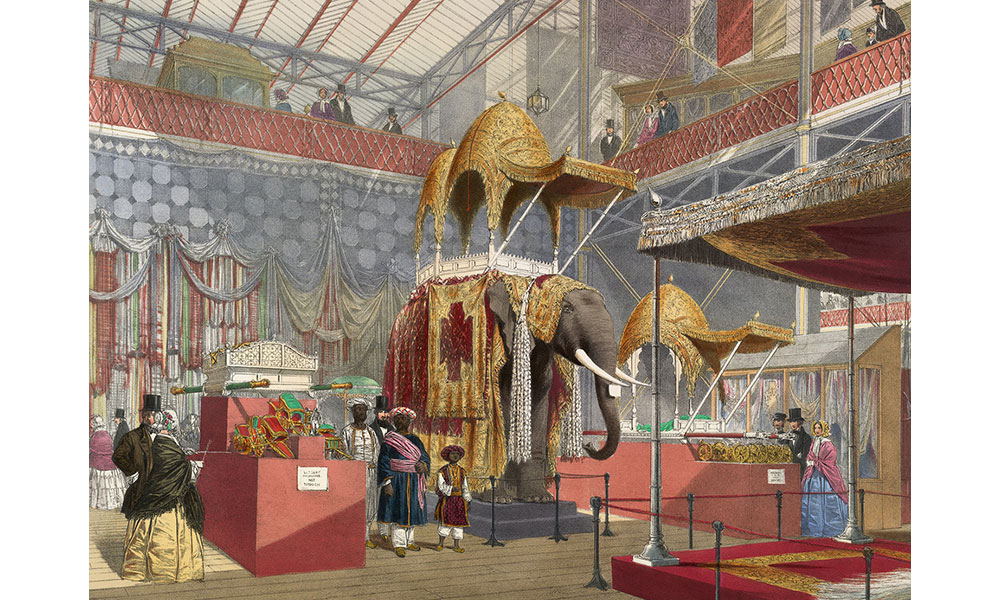
Great Exhibition Indian Howdah on African Elephant
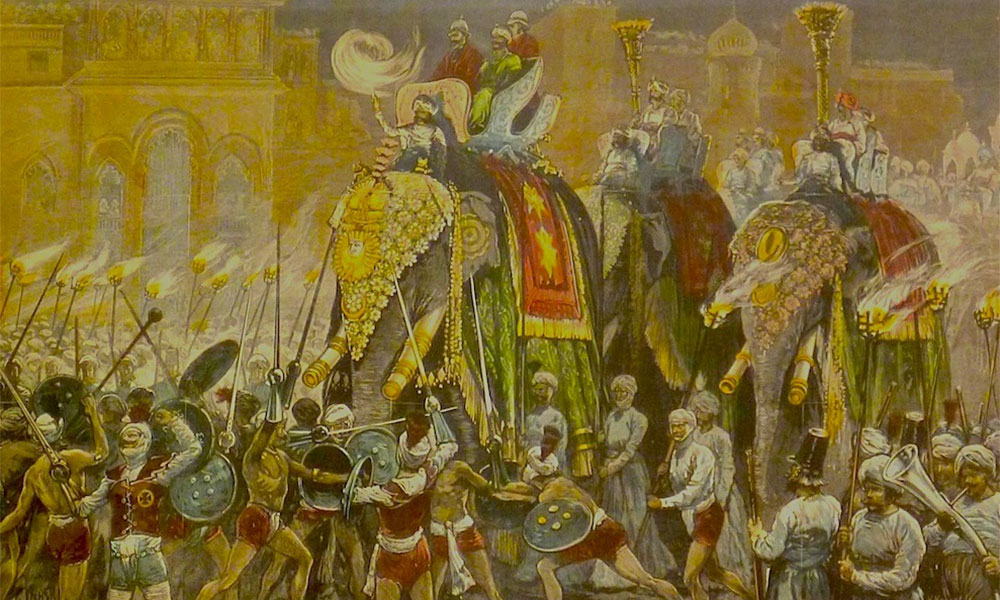
Prince of Wales in India
In the late 18th century, Queen Charlotte received at least six Indian elephants over a period of ten years. They could be viewed by the public free of charge at her London home, Buckingham House, the forerunner of Buckingham Palace. In 1851, Queen Victoria was presented with two ceremonial Indian howdahs from Bengal for display at the Great Exhibition in London, and a stuffed elephant was eventually found to display them. The fact that the only one available was an African rather than an Indian elephant did not deter the public’s enthusiasm for the exhibit.
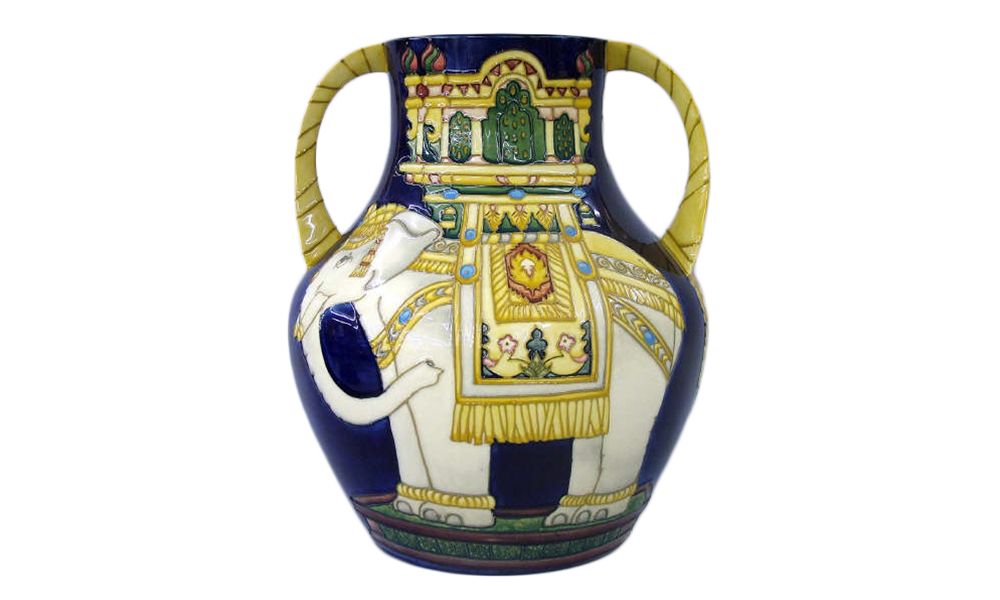
Moorcroft Thomas Goode Elephant Vase
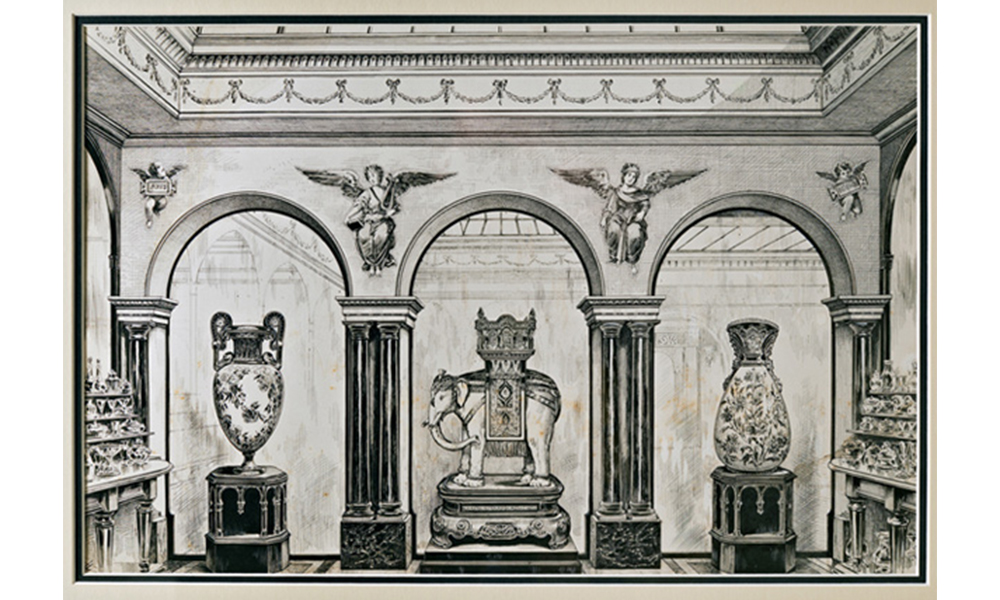
Minton Thomas Goode Elephant
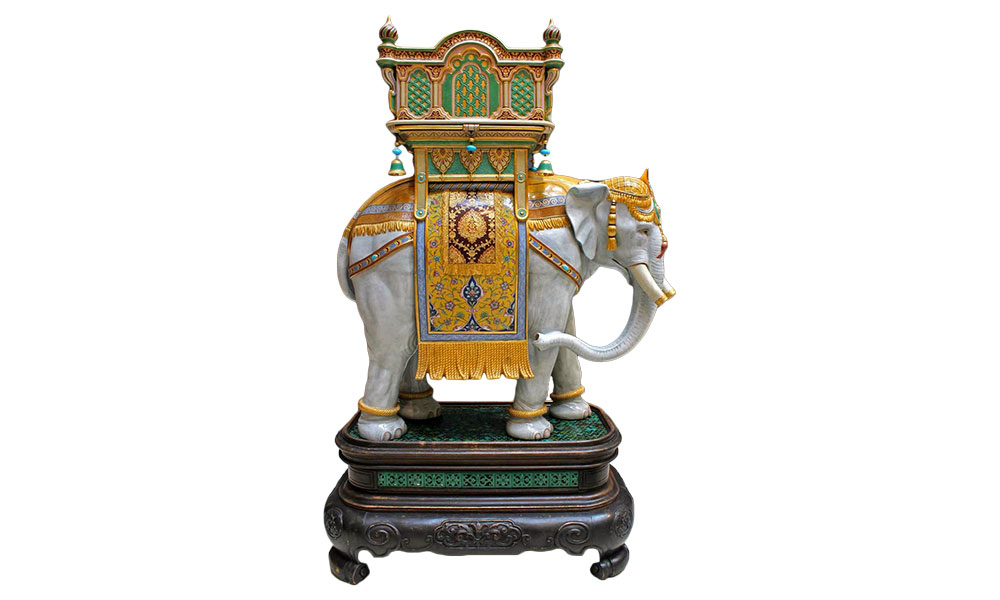
Monumental Minton Majolica Elephant for Thomas Goode

T. Goode & Co Mayfair
The Prince of Wales, Queen Victoria’s heir, visited India in 1875 where he rode on elephants for royal receptions and hunting expeditions. The success of his tour, which was relayed to a fascinated public in England, helped to secure Queen Victoria’s title as the Empress of India. Interest in India and all the elephants being imported for menageries and circuses inspired many models of howdah-carrying elephants by British potteries.
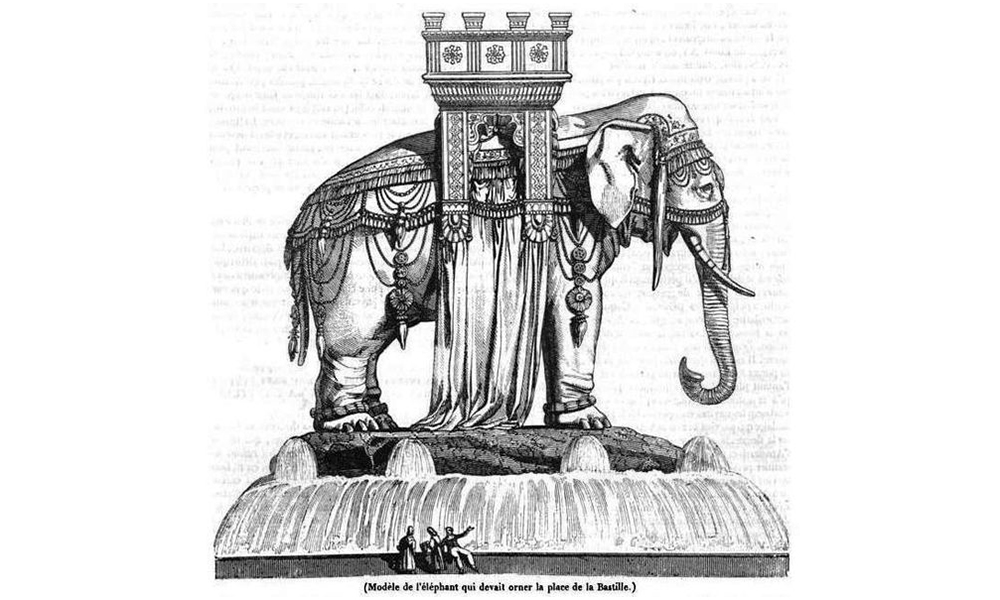
Place de la Bastille Elephant Paris
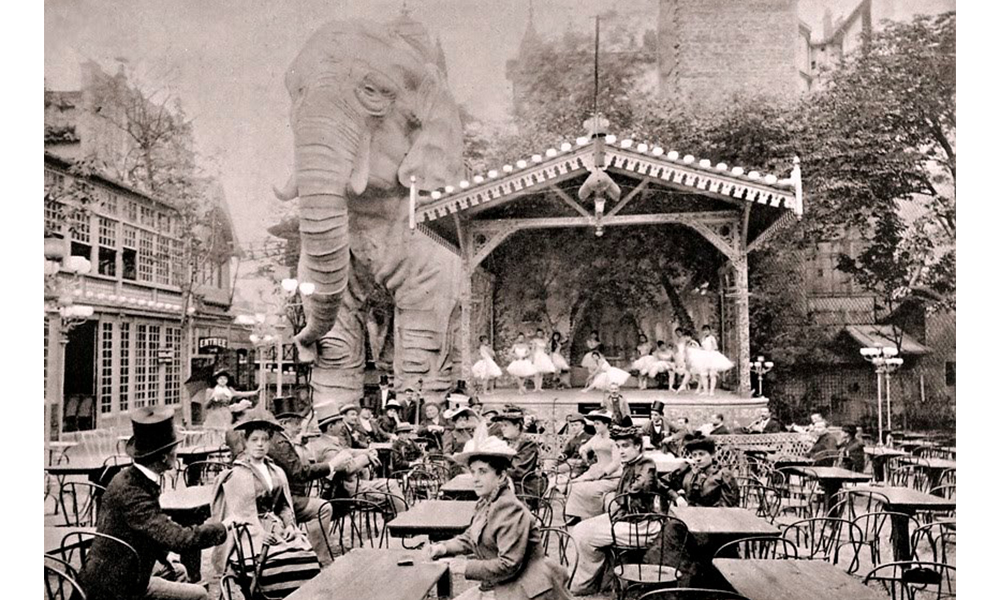
Moulin Rouge Elephant Paris
The Minton Pottery in Staffordshire made an enormous Majolica statue of a caparisoned elephant with a howdah standing seven feet tall, which caused a sensation at the 1889 Paris Exhibition. Two of them still turn heads today in the windows of the Thomas Goode china shop in Mayfair, London. Monumental elephant statues appealed to Parisians. Emperor Napoleon planned to build an enormous bronze elephant that visitors could climb inside at the Place de la Bastille, the birthplace of the French Revolution. A full-scale plaster structure was completed and is remembered as the home of the street urchin Gavroche in Victor Hugo’s Les Miserables. There was also a monumental elephant at the Moulin Rouge cabaret, where men could enter to watch belly dancers and smoke opium.
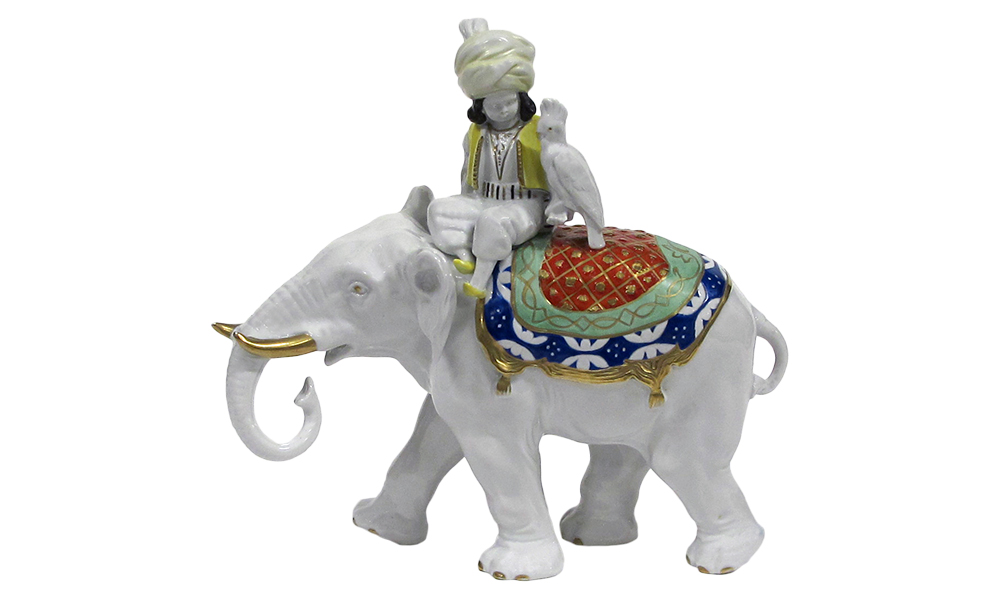
Kister Porcelain Elephant
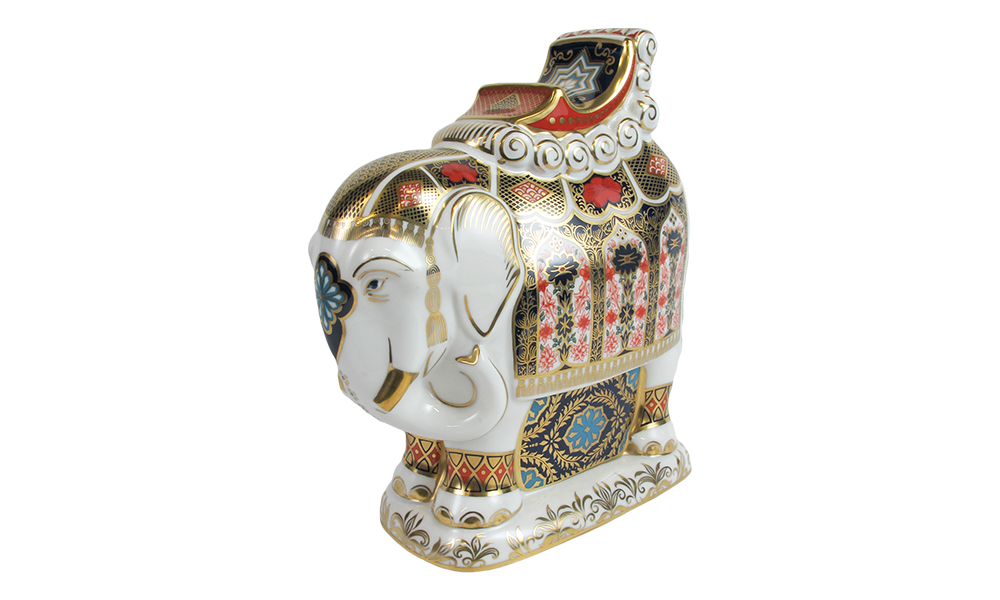
Royal Crown Derby Elephant
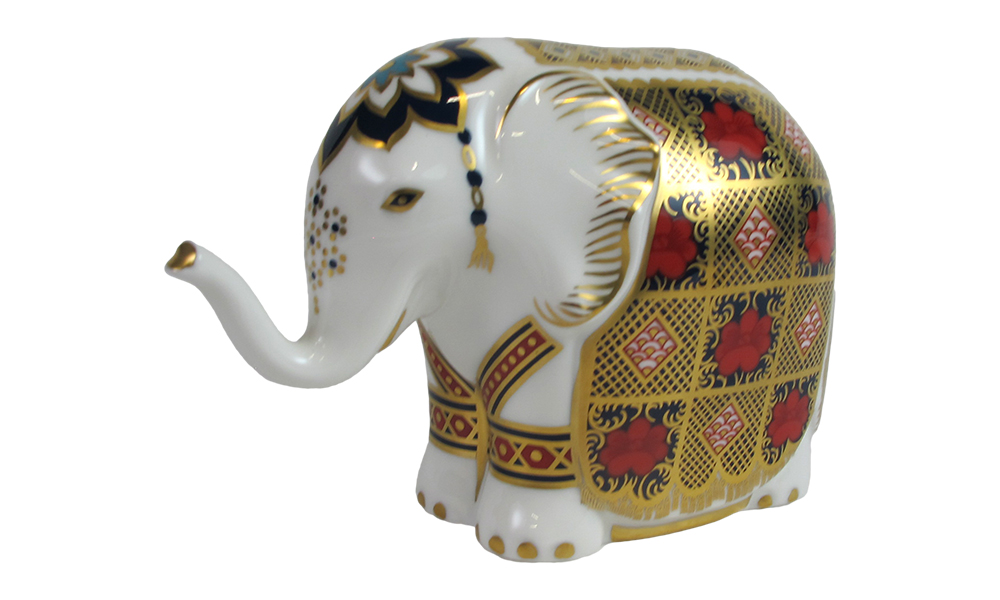
Royal Crown Derby Elephant
For ceremonial processions, Indian elephants carried a howdah with a canopy, known as an ambari, which was an elaborate throne-like platform. The Maharaja of Baroda, who commissioned the museum’s monumental Doulton vase, had a golden ambari that only the mightiest elephants could support. It took more than twenty men to hoist the platform onto the elephant’s back. The Maharaja owned 55 state elephants, which were decked out in ornamental coverings, known as caparisons, woven in cloth of gold for special occasions.
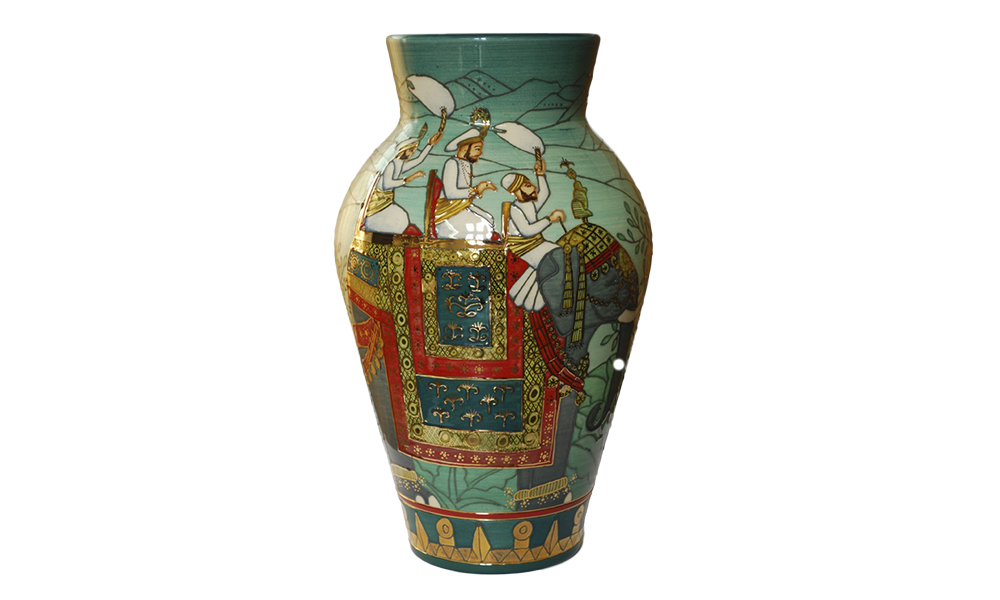
Dennis Chinaworks Elephant Procession
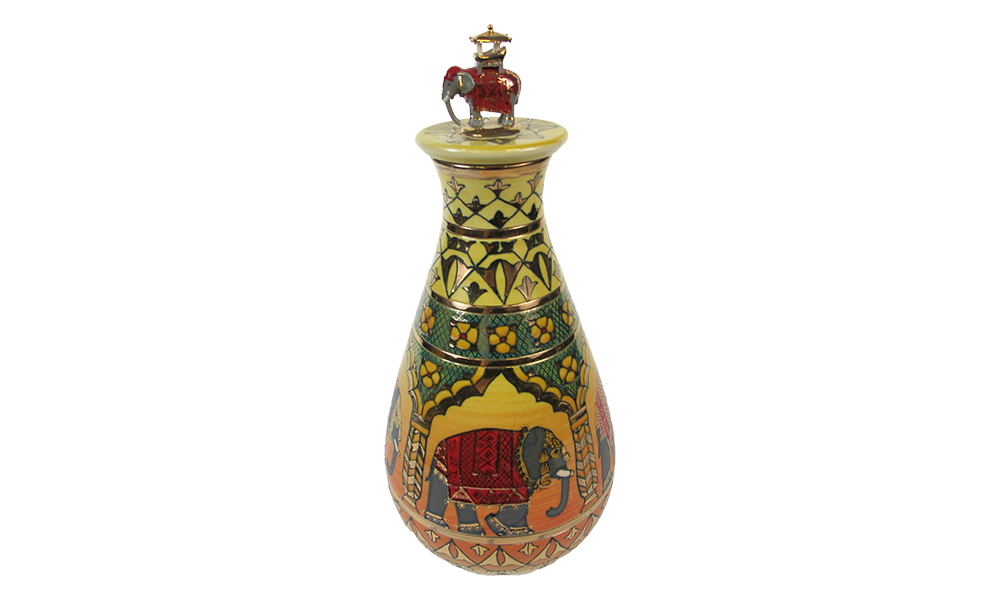
Dennis Chinaworks Bottle
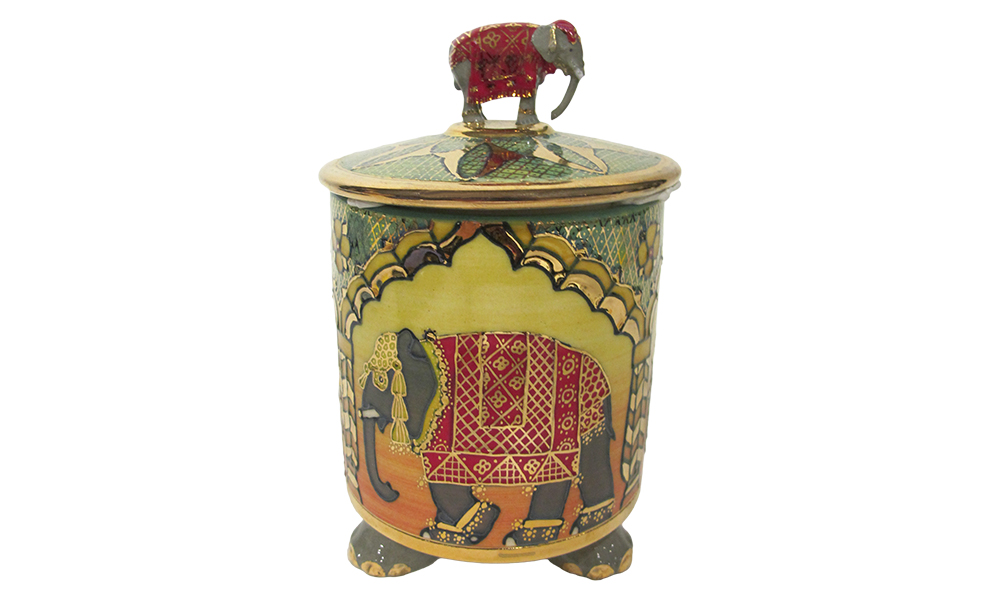
Dennis Chinaworks Elephant Box
In 1989, to mark the centennial of Minton’s Majolica elephants, the Moorcroft Pottery was commissioned to produce a two-handled commemorative vase, which was issued in a limited edition of 25. It was designed by Sally Tuffin who went on to produce many striking elephant designs at her own studio, the Dennis Chinaworks. Many are gilded to symbolize the splendor of Asian elephants on ceremonial occasions. See all the pachyderms in pottery at WMODA which are worth their weight in gold!
Read more about elephants at WMODA
100 Elephants @ WMODA | Weiner Museum
Jumbo to Dumbo | Wiener Museum
An Elephant in the Room | Wiener Museum
Ardmore Safari Dance | Wiener Museum
Read more about Princess Badoura at WMODA
Princess Badoura | Wiener Museum
